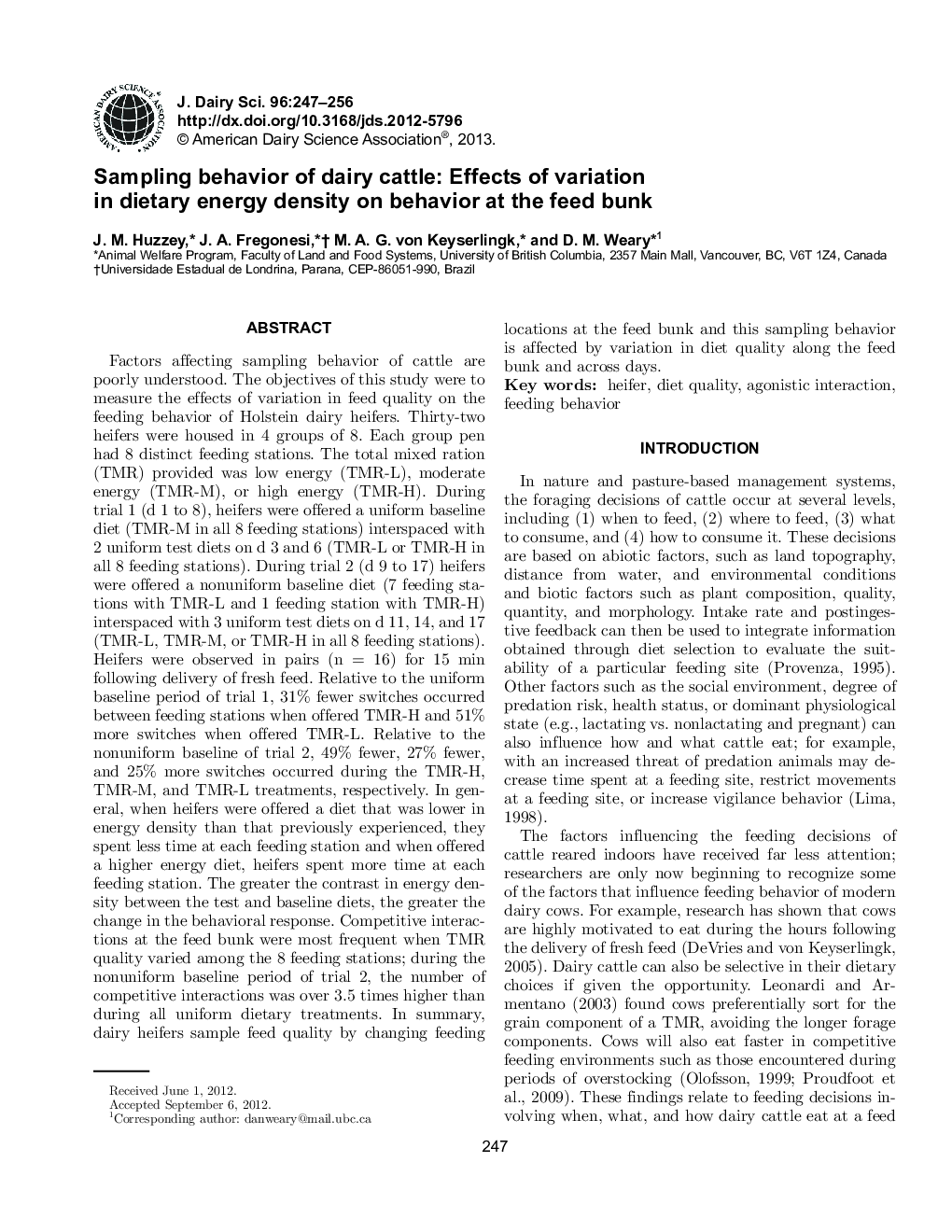| کد مقاله | کد نشریه | سال انتشار | مقاله انگلیسی | نسخه تمام متن |
|---|---|---|---|---|
| 10980537 | 1108071 | 2013 | 10 صفحه PDF | دانلود رایگان |
عنوان انگلیسی مقاله ISI
Sampling behavior of dairy cattle: Effects of variation in dietary energy density on behavior at the feed bunk
ترجمه فارسی عنوان
رفتار نمونه گیری گاوهای شیری: تأثیر تغییرات در تراکم انرژی رژیم غذایی بر رفتار خوشه های خوراکی
دانلود مقاله + سفارش ترجمه
دانلود مقاله ISI انگلیسی
رایگان برای ایرانیان
کلمات کلیدی
تلخ کیفیت غذا، تعامل هنجار، رفتار تغذیه ای
موضوعات مرتبط
علوم زیستی و بیوفناوری
علوم کشاورزی و بیولوژیک
علوم دامی و جانورشناسی
چکیده انگلیسی
Factors affecting sampling behavior of cattle are poorly understood. The objectives of this study were to measure the effects of variation in feed quality on the feeding behavior of Holstein dairy heifers. Thirty-two heifers were housed in 4 groups of 8. Each group pen had 8 distinct feeding stations. The total mixed ration (TMR) provided was low energy (TMR-L), moderate energy (TMR-M), or high energy (TMR-H). During trial 1 (d 1 to 8), heifers were offered a uniform baseline diet (TMR-M in all 8 feeding stations) interspaced with 2 uniform test diets on d 3 and 6 (TMR-L or TMR-H in all 8 feeding stations). During trial 2 (d 9 to 17) heifers were offered a nonuniform baseline diet (7 feeding stations with TMR-L and 1 feeding station with TMR-H) interspaced with 3 uniform test diets on d 11, 14, and 17 (TMR-L, TMR-M, or TMR-H in all 8 feeding stations). Heifers were observed in pairs (n = 16) for 15 min following delivery of fresh feed. Relative to the uniform baseline period of trial 1, 31% fewer switches occurred between feeding stations when offered TMR-H and 51% more switches when offered TMR-L. Relative to the nonuniform baseline of trial 2, 49% fewer, 27% fewer, and 25% more switches occurred during the TMR-H, TMR-M, and TMR-L treatments, respectively. In general, when heifers were offered a diet that was lower in energy density than that previously experienced, they spent less time at each feeding station and when offered a higher energy diet, heifers spent more time at each feeding station. The greater the contrast in energy density between the test and baseline diets, the greater the change in the behavioral response. Competitive interactions at the feed bunk were most frequent when TMR quality varied among the 8 feeding stations; during the nonuniform baseline period of trial 2, the number of competitive interactions was over 3.5 times higher than during all uniform dietary treatments. In summary, dairy heifers sample feed quality by changing feeding locations at the feed bunk and this sampling behavior is affected by variation in diet quality along the feed bunk and across days.
ناشر
Database: Elsevier - ScienceDirect (ساینس دایرکت)
Journal: Journal of Dairy Science - Volume 96, Issue 1, January 2013, Pages 247-256
Journal: Journal of Dairy Science - Volume 96, Issue 1, January 2013, Pages 247-256
نویسندگان
J.M. Huzzey, J.A. Fregonesi, M.A.G. von Keyserlingk, D.M. Weary,
